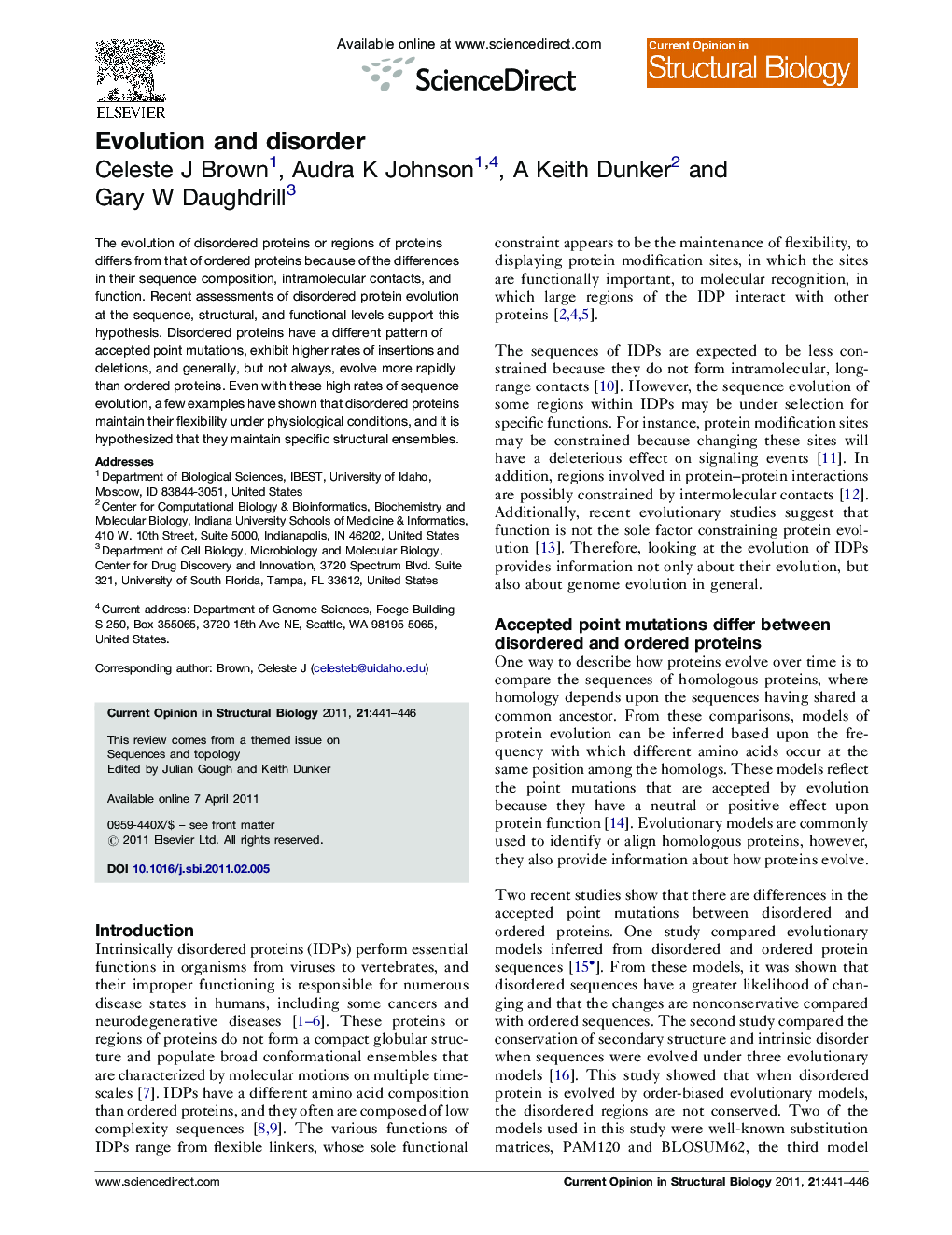| Article ID | Journal | Published Year | Pages | File Type |
|---|---|---|---|---|
| 1979164 | Current Opinion in Structural Biology | 2011 | 6 Pages |
The evolution of disordered proteins or regions of proteins differs from that of ordered proteins because of the differences in their sequence composition, intramolecular contacts, and function. Recent assessments of disordered protein evolution at the sequence, structural, and functional levels support this hypothesis. Disordered proteins have a different pattern of accepted point mutations, exhibit higher rates of insertions and deletions, and generally, but not always, evolve more rapidly than ordered proteins. Even with these high rates of sequence evolution, a few examples have shown that disordered proteins maintain their flexibility under physiological conditions, and it is hypothesized that they maintain specific structural ensembles.
► Intrinsically disordered protein (IDP) evolves differently than ordered protein. ► IDPs have more gaps, different accepted mutations, and generally evolve more rapidly. ► Flexibility is maintained under natural conditions in spite of sequence differences. ► Evolutionary constraints on IDP functions remain to be elucidated. ► Differences from ordered protein may explain general patterns of genome evolution.
